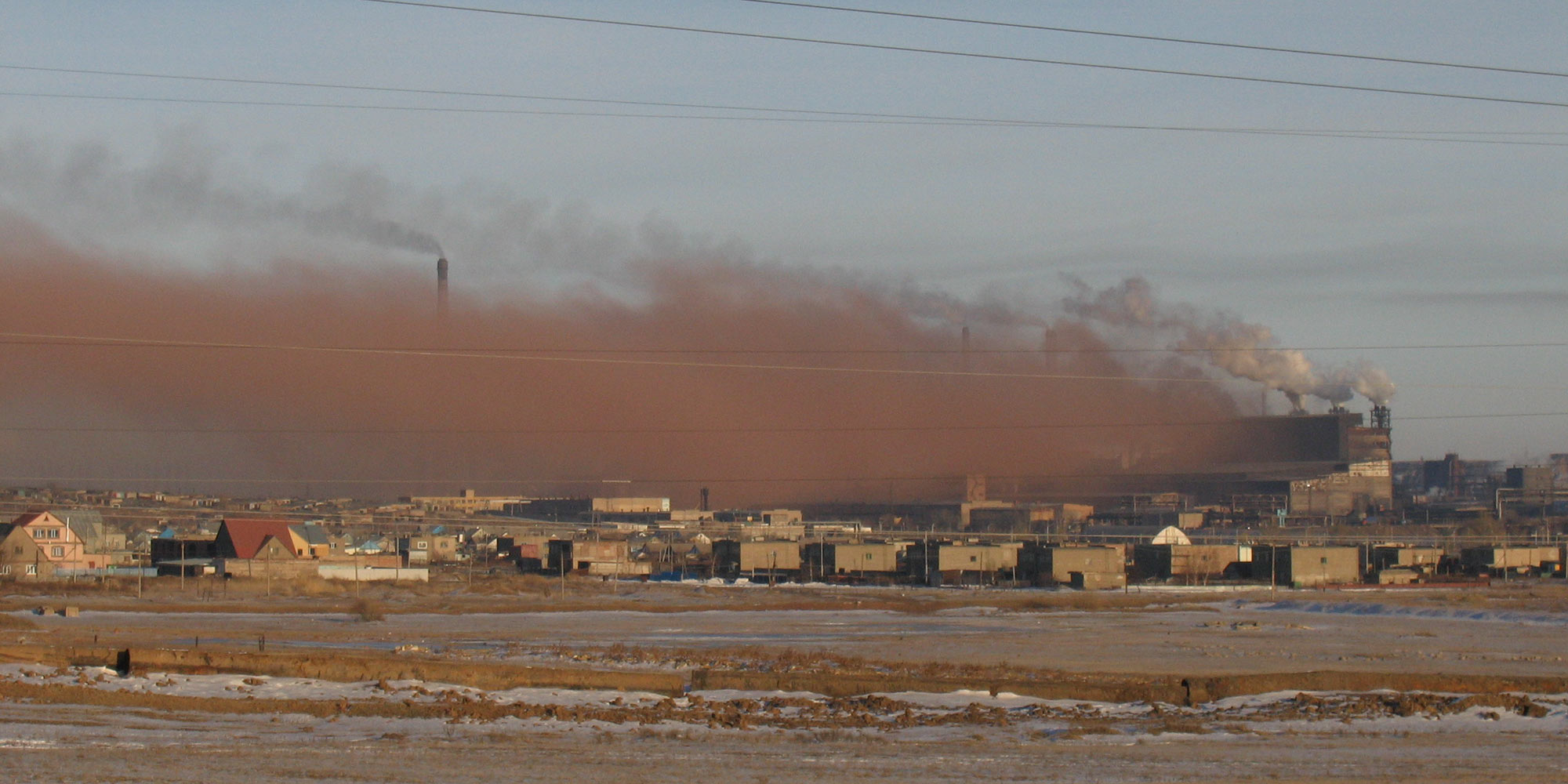ArcelorMittal Temirtau, Kazakhstan
While fatal accidents at the ArcelorMittal Temirtau mines continue, the company has so far not provided sufficient information to allow an assessment whether an EBRD funded project to improve health and safety conditions is being implemented successfully.
This is an archived project. The information here may be out of date.
Learn more about our current projects and sign up for the latest updates.

Stay informed
We closely follow international public finance and bring critical updates from the ground.
Background
In 2007, ArcelorMittal (AM) received a loan from the European Bank for Reconstruction and Development (EBRD) to support further improvements of health and safety practices in its mining complex ArcelorMittal Temirtau (AMT).
ArcelorMittal’s success in securing yet another loan by a public finance institution contrasts starkly with the shortcomings of the previous AMT improvement project that was supported by the EBRD and the International Finance Corporation (IFC).
Bankwatch, the Center for Introduction of New Environmentally Safe Technologies in Kazakhstan and the coalition Global Action on ArcelorMittal (GAAM) have called for greater transparency and participation in project planning and implementation and for more scrutiny by the EBRD to ensure the effectiveness of activities financed by its loans.
Arcelor Mittal and the mining complex in Temirtau
Temirtau is a town with a population of 170 000 in the Karaganda region of Kazakhstan. Founded in the early 20th century, the city rapidly expanded with the opening of its massive steelworks during the 1950s. Temirtau is heavily dependent on the steelworks for employment.
ArcelorMittal acquired the metal and mining complex in 1995. The ArcelorMittal Temirtau complex (AMT, formerly Mittal Steel Temirtau and Ispat) includes eight coal mines and one of the world’s largest integrated steel plant (i.e. a plant realising the full production cycle).
ArcelorMittal’s social and environmental record in Temirtau - the EBRD-IFC loan (1997-2006)
In 2006 ArcelorMittal completed a project supported by an EBRD and IFC syndicated loan of 250 million USD (approved in 1997). One of the project’s objectives was to improve the environmental and health and safety performance of ArcelorMittal Temirtau through the implementation of three Environmental Action Plans (EAPs).
Despite the EBRD’s claims that the project was implemented successfully, Temirtau remains one of the most polluted cities in Kazakhstan and there is no evidence of an improved environmental situation. In March 2010 the Karaganda Regional Prosecutor’s Office fined AMT for excess air pollution and for having no documentation for recording the main environmental characteristics of the operation procedures.
Equally poor is AM’s record regarding the health and safety performance of its Temirtau coal mines. More than a hundred miners have died in a number of accidents in the years 2004-2010. The frequency of accidents and number of deaths naturally raises questions about AM’s implementation of the project.
Temirtau remains one of the most polluted cities in Kazakhstan. There is no evidence of an improved environmental situation.
Old wine in new bottles? A new EBRD loan in 2007
In 2007 and only a year after completion of the first project, the EBRD approved another USD 100 million loan for AMT, which aimed to “support further improvements to the Mittal Steel Temirtau’s health and safety practices at its coal mines in Karaganda with the aim to bring them in line with international best practice”.
During 2008 and 2009 AMT has reported that new equipment has been installed in the Karaganda coalmines, both with the EBRD money and its own investments. However AMT withholds more detailed information that is crucial for a proper assessment of its performance:
- AMT does not release the details of its health and safety investments, such as the schedule for the EBRD’s project implementation, or the already implemented, planned, postponed or cancelled activities.
- Neither did it disclose the Environmental Action Plan – required for the EBRD loan and of great public interest given the heavy pollution in Temirtau.
- The local company manager internally approved the Stakeholder Engagement Plan (SEP) within the EBRD project. The very stakeholders the SEP is supposed to engage were not consulted. In addition, the SEP does not specify AMT’s commitments on what environmental and social information it will disclose.
This lack of information makes it impossible to monitor how effectively public money is being spent.
Latest news
Arcelor Mittal SA: Undone and dusted
Bankwatch in the media | 9 June, 2011No-one who has driven between Bloemfontein and Johannesburg could fail to have noticed the haze, stench and massive steelworks near the motorway. But Amsa is not the only polluter in the area. Sasol, Eskom power stations and, in winter, household coal fires also contribute to the horrible air quality
Read moreHundreds to protest against ArcelorMittal in Bosnia and Herzegovina
Press release | 10 February, 2011Hundreds of people are expected to attend a protest against illegal levels of air pollution from the local ArcelorMittal steelmill this Friday afternoon. The action has been organized through social media and is supported by local NGOs Dosta! and Zenica Eko-Forum.
Read moreHave you voted in the 2010 worst EU lobbying awards yet?
Blog entry | 5 November, 2010ArcelorMittal, one of the candidates for the worst EU lobby award, is the world’s largest private steel company, producing 10 per cent of the world’s steel. It is also one of Europe’s largest emitters of CO2. Yet the company successfully lobbied the European Commission on behalf of Europe’s biggest polluters to continue getting free greenhouse gas emissions permits until at least 2020.
Read moreRelated publications
Environmental, Health and Safety Audit and Partial Environmental Assessment ISPAT-KARMET Steel, Power and Coal Facilities, Temirtau/Karaganda, Kazakhstan
Official document | 7 May, 2007 | Download PDFKazakh NGOs letter of concern about the EBRD Mittal Steel Temirtau Health & Safety Project
Advocacy letter | 11 April, 2007 | Download PDFOn May 8, 2007 EBRD answered this letter. Download the response as pdf here. Also on June 13, 2007 mr Alistair Clark, Director of EBRD’s Environment Department sent the following letter.
